Did LG just pull a Samsung? LG Optimus G specs review and comparison vs Samsung Galaxy S III vs HTC One X

UPDATE: We asked LG for clarification what exactly is the material that the back of the upcoming Optimus G monster is made of, as we couldn't believe our eyes when we read glass in the press release, and it turned out to be indeed the case. Since premium materials in Android phone design are few and far between, we have to hand it to LG for trying to break that trend, and introduce not only a handset crafted with a glass-made back, but grace it with a crystal pattern to help your grip, and add to the attractiveness of its looks. As for the camera module being made in-house by LG Innotek, we'd have to wait and see what LG has done first, since this is the area its flagships need the most improvement. See the whole response below
The back cover of ‘Optimus G’ is made of glass and gives users diverse look depending on the light and the angle you see it via ‘Crystal Reflection’ design. LG has registered ‘Crystal Reflection’ design at the patent office. ‘Optimus G’ is an unibody that gives the impression of a dressed-up gentleman. [The] 13MP camera is developed by LG Innotek.
LG just stunned us with the beastliest Android phone ever announced, the Optimus G. It is becoming a company hallmark to be the first announcing a major smartphone tech breakthrough in a retail product. It did it with the first dual-core handset, the Optimus 2X, and the first 3D-capable one, the Optimus 3D. This year, it was be the first to announce a quad-core phone, the Optimus 4X HD, which turned out to be on top of that the most compact of the big-screen Androids out there.
Now we have the first smartphone to hit retail with the "2nd generation quad-core", as LG puts it, running Snapdragon S4 Pro, whose Adreno 320 GPU is shaping to take the mobile industry graphics top. Xiaomi Phone 2, which was the first announced with this chipset, is out in October, whereas the LG Optimus G will be available for sale in Korea next month, and even earlier in Japan. Not to mention that LG Optimus G will be the first to hit with a quad-core Snapdragon and multimode LTE radio, beckoning the carriers to adopt it.
A lot of industry pundits have been complaining that LG just looks up to the mobile success of its fellow countryman Samsung, and tries to emulate it in its phones, both in hardware and software overlays, losing identity in the process. Looking up to the best is never a bad thing, though, since you can learn a lot, and even emulate their commercial success, as Apple lawyers in the trial with Samsung kept repeating. LG's share price has been up quite a few percentage points since the Apple-Samsung verdict, as analysts believe it will benefit from the kerfuffle. With handsets like the Optimus G, it now has the viable contender to indeed do so, so let's see what the handset will offer in comparison with the other bad Android boys.
Design
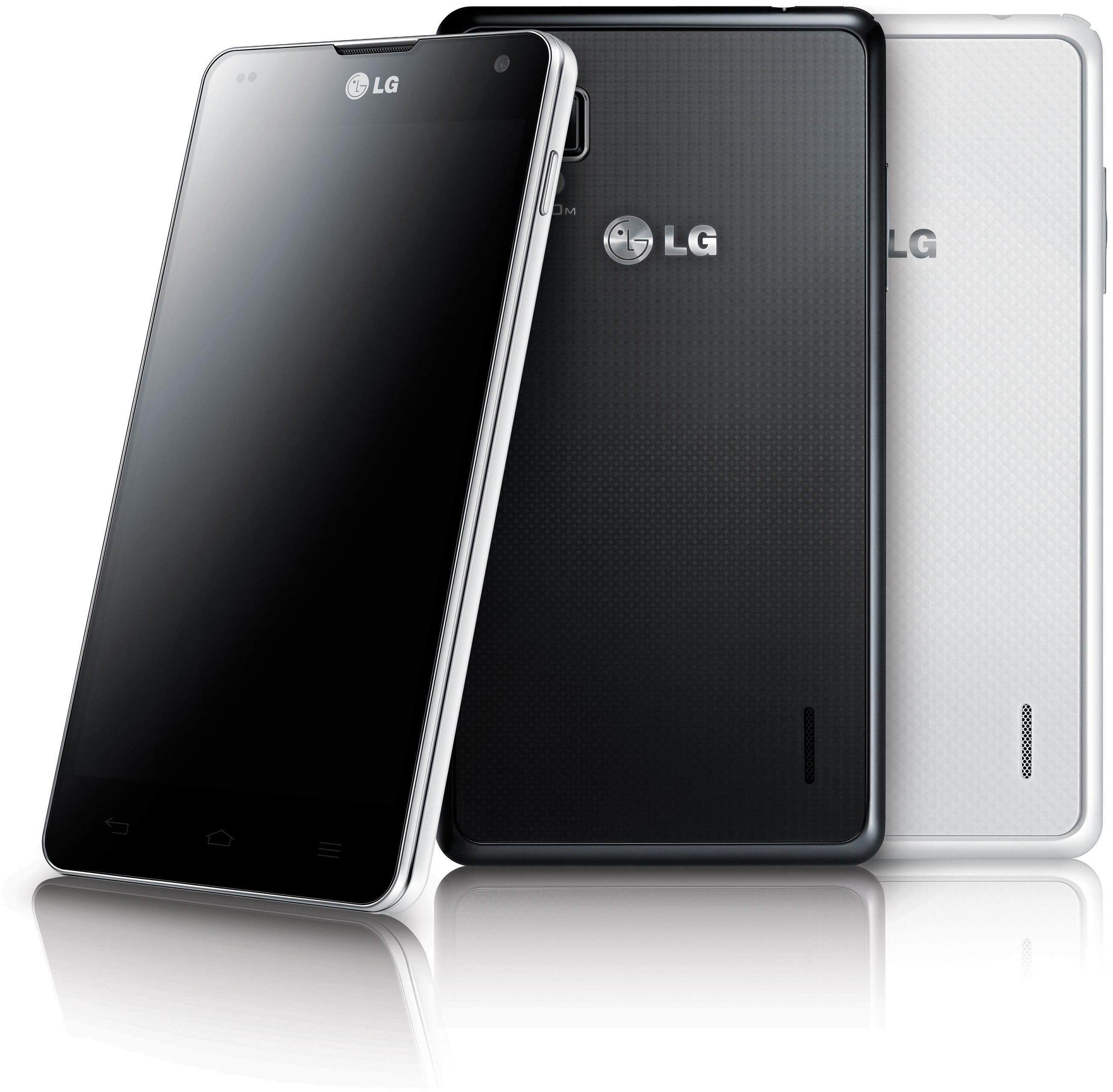
Optimus G for Korea with 'polarized glass' back"
Moreover, LG is using exquisite materials for the build this time - in the press release it sent us, the back cover is stated to "utilize premium glass", with a patterned "polarized glass" look, making it one of the very few modern smartphones that uses glass for the chassis, so it is inevitably also slightly heavier than the two polycarbonate high-ends from Samsung and HTC. The back design with polarized glass under the surface shines with different colors depending on the light angle that shines on it, something LG calls Crystal Reflection back, and has patented, after developing it for 15 months.

The translation from the Korean PR says "luxurious crystal reflection method to the rear", after all.
In contrast, the NTT DoCoMo Optimus G L-01E version in red and black that you see on the left doesn't seem to sport the same "polarized glass" cover LG touts, but in Japan flagship phones have to answer to different standards, like being waterproof, for example.
| Design | LG Optimus G | Samsung Galaxy S III | HTC One X |
|---|---|---|---|
| OS | Android (4.0.4) | Android (4.0.4) TouchWiz UX UI | Android (4.0.4, 4.0.3) Sense 4 UI |
| Dimensions | 5.19 x 2.71 x 0.33 (131.9 x 68.9 x 8.45 mm) | 5.38 x 2.78 x 0.34 (136.6 x 70.6 x 8.6 mm) | 5.31 x 2.75 x 0.35 (134.8 x 69.9 x 8.9 mm) |
| Weight | 5.11 oz (145 g) the average is 4.1 oz (117 g) | 4.73 oz (134 g) the average is 4.1 oz (117 g) | 4.55 oz (129 g) the average is 4.1 oz (117 g) |
| Display | |||
|---|---|---|---|
| Physical size | 4.70 inches | 4.80 inches | 4.70 inches |
| Resolution | 768 x 1280 pixels | 720 x 1280 pixels | 720 x 1280 pixels |
Pixel density | 318 ppi | 306 ppi | 312 ppi |
Technology | IPS LCD | Super AMOLED | S-LCD 2 |
| Battery | |||
|---|---|---|---|
| Capacity | 2100 mAh | 2100 mAh | 1800 mAh |
| Hardware | |||
|---|---|---|---|
System chip | Qualcomm Snapdragon S4 Pro APQ8064 | Qualcomm Snapdragon S4 MSM8960 | Qualcomm Snapdragon S4 MSM8960 |
Processor | Quad core, 1500 MHz, Krait | Dual core, 1500 MHz, Krait | Dual core, 1500 MHz, Krait |
| Graphics processor | Adreno 320 | Adreno 225 | Adreno 225 |
System memory | 2048 MB RAM (Dual-channel: Yes) | 2048 MB RAM (Dual-channel: Yes) / DDR2 (500 MHz) | 1024 MB RAM (Dual-channel: Yes) / DDR2 (500 MHz) |
| Built-in storage | 32 GB | 16 GB | 16 GB |
| Camera | |||
|---|---|---|---|
| Camera | 13MP | 8MP | 8MP |
| Flash | LED | LED | LED |
| Aperture size | F2.6 | F2.0 | |
| Camcorder | 1920x1080 (1080p HD) | 1920x1080 (1080p HD) | 1920x1080 (1080p HD) |
Chipset
LG has utilized its vertical integration strategy for the first time with the Optimus G, it says, using the best of its undoubtedly capable sister display, chemicals and R&D companies, yet venturing outside for the best SoC currently on the market - the quad-core Snapdragon APQ8064. True Cortex-A15 its "Krait" cores are not, but the synergies of having everything on one chip, including blazing graphics and multimode LTE/HSPA+ radio, are undeniable, and a hallmark of Qualcomm's mobile success.

LG has announced it will start developing its own mobile silicon, to achieve even greater vertical integration, just like Samsung, but the Texans know their chip-making, and the smart move is to use the best on the market for only a few bucks more, as mobile chipset pricing goes, rather than put an inferior silicon in your flagship for the sake of doing everything in-house.
The APQ8064 offers 40% the performance of its predecessor, and 3x the graphics prowess that is in the Snapdragon S4 in Samsung and HTC's finest for AT&T above. The 7, 000+ Quadrant scores and the top place in the GLBenchmark database, above even the mighty PowerVR GPU in the new iPad, are enough of a testament that the Optimus G will be the most powerful Android device out there at launch. Couple this with the chipset supporting all widespread 4G radios under the sun, and its fast carrier adoption seems guaranteed.

Display
True HD IPS+ is what LG calls its new type of display, with LG Innotek lending a helpful hand for the G2 Touch Hybrid Display technology. We'd wager to guess that it is based on the same already excellent 4.7" IPS unit in the Optimus 4X HD, but with slightly higher 1280x768 resolution hence pixel density, because of the on-screen Android navigation buttons, and, best of all, an in-cell touch layer, developed by LG Innotek. In-cell means that the sensors are integrated directly into the screen, not needing an additional layer on top of it, with the assoicated air gap and connectors.
This allowed for a 30% thickness reduction, making the whole display piece sub-1mm thin, which is the basis for the Optimus G to be the most compact of the big-screen Androids, including the 4X HD. LG has undoubtedly learned from making many of those for the upcoming iPhone 5, and it is now merging the touch layer for its own flagship.
LG Display's in-cell tech has also allowed for an extremely thin bezel, to the tune of 3mm, as little as Xiaomi's Phone 2 side bezel it touted as the slimmest ever the other day. LG says that this True HD IPS+ screen now shows the same color as the bezel when turned off, further removing the distinction where the screen ends and the bezel begins.
The integrated touch layer also allows for more backlight to go through, ensuring the display's excellent 470 nits of brightness with the same power consumption. In the promo video for the tech below, LG touts that it is better than Samsung's AMOLED screens, as it uses a regular RGB matrix, rather than the PenTile pixel structure, and also consumes up to 70% less energy when displaying white. While the RGB matrix advantage is somewhat important if you look at solid colors or enlarge small text, at HD resolutions the advantage is not that discernible.
As far as energy consumption goes, the AMOLED takes out nothing when displaying black, unlike the LCD screen, so it mostly evens out, save for long web-browsing or ebook reading sessions on your handset. Also, Samsung's Super AMOLED screens have had this integrated layer for a while now, allowing for its incredibly thin large-screen phones like the Galaxy S III.

Camera
If there is an Achilles heel throughout the LG flagship Android lineup hardware, it is the camera module, as our most recent test of all current high-ends against the Nokia 808 PureView confirmed. The Optimus 4X HD's 8MP camera fared the worst there in almost all scenarios, and we sincerely hope the improvement efforts with the Optimus G have been significant in that direction.
The G sports a new sensor that the sister company LG Innotek has developed in-house, although the highest resolution for its sensors is listed as "up to 12MP" right now. The company touts the 13MP camera module's low-light capabilities, which most likely means a back-illuminated BSI unit, as in most current flagships, but the final samples from it will be the ultimate judge, especially if it is an LG camera module. Word now is that the sensor itself is made by Sony, possibly one of its Exmor RS units, and the they say that's why the Note II doesn't have the 13MP camera rumored - because LG prepaid for the excess modules Sony can produce now. The LG Innotek engineers have slimmed the module down significantly, though, as you can see in the promo video below.

The handset will sport a 13MP sensor, with the only others with such resolution being the Exmor RS phones of the Sony Xperia lineup, like the Xperia GX, and the upcoming Xperia T flagship. This can also explain the compact body of its new Optimus further, as Sony utilizes a "stacked" sensor tech with the 13MP unit, saving space for other components. NTT DoCoMo, however, lists the camera as 13.25 with 13.13 effective megapixels, which leans towards the IMX135 Exmor RS sensor, that Sony quotes to be with exactly 13.13MP effective as well, and is done with 1.12 micron pixel technology, just what LG says is in the Optimus G.
In certain markets, the fine print reads in the video above, the Optimus G will be launched with an 8MP unit, and coincidentally Sony also makes an 8MP Exmor RS sensor, but in the US we will most likely get the 13MP versions.
While the resolution may be high, it is achieved by shrinking the pixels, so they can fit in the ultra compact module, down to 1.1 microns and with a mere 1/3" sensor size, its performance is unlikely to be drastically better than those of other flagship smartphones that have similar specs. The sample shots will be the ultimate judge, but just for comparison's sake - the Nokia 808 PureView has a 1/1.2" large sensor with 1.4 microns pixel, the Lumia 920 has 1.4 microns as well, on a 1/3" sensor, and the Nokia N8 has 1.75 microns pixel size on a 1/1.83" 12MP sensor.
Even if we don't count those photography buffs from the Finns, the Galaxy S III and the iPhone 4S also have 1.4 micron pixels in their sensors, and we know the larger the pixel "bucket", the more light it can soak in.
Thus the Optimus G is unlikely to wow in low light conditions, judging on camera specs alone, but, still, any improvement from LG's current high-ends will inevitably make the upcoming LG flagship more appealing in the camera department too.
Even if we don't count those photography buffs from the Finns, the Galaxy S III and the iPhone 4S also have 1.4 micron pixels in their sensors, and we know the larger the pixel "bucket", the more light it can soak in.
Thus the Optimus G is unlikely to wow in low light conditions, judging on camera specs alone, but, still, any improvement from LG's current high-ends will inevitably make the upcoming LG flagship more appealing in the camera department too.
Battery
A high-density 2, 100 mAh unit developed by LG Chem comes with the Optimus G, and the company touts its efficiency, as well as endurance, since it is rated for 800 recharge cycles, rather than the usual 500 a smartphone commands. This is achieved via high-density, high-voltage package, which allows increase in capacity compared an ordinary battery of the same size.

Software
The Korean LG Optimus G will ship with Android 4.0 Ice Cream Sandwich, says the press release, and we don't know if Jelly Bean will be onboard yet for the global rollout later. The added value in the Optimus UX overlay will be in the following features:
- Live Zooming allows zooming in and out while viewing a video;
- Dual Screen Dual Play, not only allows mirroring between the smartphone and a TV, it also has the ability to display different content on each screen. For example, a slide presentation can be displayed on the TV while the Optimus G shows the accompanying speaking notes;
- QMemoTM, first seen in the Optimus Vu:, allows users to write, draw, or jot a memo directly on the captured screen with their finger for sharing instantly with others as an attachment or a URL;
- Time Catch Shot allows users to select and save the best shot among the images taken just before the shutter button is depressed;
- Cheese Shutter takes a photo when a voice command is spoken.
If LG has managed to finally escape the stigmata of subpar cameras and wimpy loudspeakers of its flagship handsets with the Optimus G, it has every chance to turn what is already the best-spec'd Android phone on paper, into a truly formidable device that others, including Samsung, will have to look up to this holiday season.
Using premium materials like glass in an extremely compact body is already a huge step forward in Android land, not to mention the 2GB of RAM and 32GB internal memory form the get-go, so we can't wait to obtain a review unit of the LG Optimus G, and put it through its paces to determine if this new "vertical integration" strategy will put it LG on the Android map with a vengeance. What do you think about the Optimus G so far?
LG UNVEILS WORLD’S FIRST LTE SMARTPHONE WITH SNAPDRAGON QUAD-CORE
Newest Premium Device from LG Sets High Benchmark for Performance and Usability
SEOUL, August, 28, 2012 – LG Electronics (LG) revealed its newest premium mobile device with the announcement of the Optimus G, a high-end smartphone that offers powerful performance, an elegant and sleek design, and an innovative user experience. As the first LTE device featuring Qualcomm’s Snapdragon™ S4 Pro Quad-Core processor, Optimus G will set the foundation for every future premium smartphone from LG.
Best-of-Best Technologies
To offer the best smartphone to consumers, LG gathered industry-leading partners and technologies to develop the Optimus G. In collaboration with Qualcomm, LG developed the Optimus G with the goal to be the first LTE smartphone with the Snapdragon™ S4 Pro CPU. LG also joined hands with vertically-integrated sister companies LG Chem, LG Display and LG Innotek for the ultimate battery capacity, viewing and user experience.
Next Generation Quad-Core with LTE
The Optimus G will be the first commercial and global smartphone to offer the Snapdragon S4 Pro (APQ8064) processor with a Quad-Core Krait CPU, LTE supported capabilities, and the newest generation Adreno™ 320 GPU. The Snapdragon S4 Pro runs at 1.5GHz and features Asynchronous Symmetric Multiprocessing (aSMP), which enables each core to power up and down independently, for maximum performance with better battery life. Furthermore, the Adreno 320 is over three times faster than the Adreno 225 found in previous Snapdragon processors for an enhanced gaming experience with faster frame rates, smoother play and support for higher HD resolution displays.
Cutting-edge Display and Outstanding Battery Efficiency
With help from LG Display, the Optimus G sports a beautiful 4.7-inch WXGA True HD IPS+ Display with 320ppi high pixel density (1280x768 pixels) and Stripe RGB IPS Panel with 15:9 aspect ratio. LG Display pushed the boundaries of its technology to offer True HD IPS+ Display, which is sharper and crisper with color accuracy of sRGB 100 percent to show natural and life-like images.
Moreover, the Optimus G will be the first smartphone to be equipped with LG Innotek and LG Display’s newly developed G2 Touch Hybrid Display for touchscreen panels (TSP). The G2 Touch Hybrid Display is thinner than current TSPs and offers the slimmest panel display with no diffused reflection for clearer and sharper visibility, even outdoors. Thanks to the new technology, the thickness of the screen panel has been reduced and the screen itself is much stronger to withstand damage from impact.
Lastly, LG Chem developed a high-density 2,100mAh battery that provides more power capacity and prolonged charging cycles. The new battery technology extended the battery lifespan to 800 cycles at 80 percent charging capabilities, much greater than the lifespan of 500 cycles in regular phone batteries.
Enhanced UX for Productivity and Entertainment
Whether users need functionality or fun in their daily lives, the Optimus G has it all, including a high-resolution 13.0MP camera and unique and differentiated user experience (UX) features, such as:
Live Zooming allows zooming in and out while viewing a video;
Dual Screen Dual Play, not only allows mirroring between the smartphone and a TV, it also has the ability to display different content on each screen. For example, a slide presentation can be displayed on the TV while the Optimus G shows the accompanying speaking notes;
QMemoTM, first seen in the Optimus Vu:, allows users to write, draw, or jot a memo directly on the captured screen with their finger for sharing instantly with others as an attachment or a URL;
Time Catch Shot allows users to select and save the best shot among the images taken just before the shutter button is depressed;
Cheese Shutter takes a photo when a voice command is spoken.
The added UX features are anticipated to provide instant and intuitive productivity to complete tasks beyond simple multitasking.
Innovative and Modern Look
LG maintained its differentiated design philosophy with the Optimus G. The Optimus G is encased in an eye-catching slim body epitomizing timeless beauty that perfectly demonstrates LG’s design philosophy. Premium glass is utilzied on the back cover with a polarized glass pattern that offers a clean, modern look. The G2 Touch Hybrid Display contributed significantly to the design of the Optimus G as it reduced the thickness of the device enabling Optimus G to fit more comfortably in the hand. And the jet black front display flows smoothly into the body for a seamless look with no gaps.
“We are confident that users will have a superior experience with everything that we’re offering in the Optimus G,” said Dr. Jong-seok Park, president and CEO of LG Electronics Mobile Communications Company. “Optimus G isn’t just another high-performance phone with the latest bells and whistles. It’s a collaboration of some of the best component makers on the planet coming together for a singular cause, to develop a smartphone that stands out in a sea of me-too devices.”
NTT DOCOMO will be the first to unveil a Japanese edition of the Optimus G. The global version of the device will be launched in Korea in September, followed by other markets worldwide.
Key Specifications:
Chipset: Qualcomm Snapdragon S4 Pro Processor with 1.5GHz Quad-Core CPU, Adreno 320 GPU with 4G LTE
Operating System: Android 4.0 Ice Cream Sandwich
Network: 2G / 3G / 4G LTE
Display: 4.7-inch WXGA True HD IPS+ (1280x768 pixels) / 15:9 ratio
Memory: 32GB
RAM: 2GB DDR
Cameras: 13.0MP rear / 1.3MP front
Battery: 2,100 mAh
Size: 131.9 x 68.9 x 8.45mm
Weight: 145g
Other: Bluetooth 4.0, Wi-Fi, USB2.0 HS, A-GPS, MHL, DLNA, NFC
Newest Premium Device from LG Sets High Benchmark for Performance and Usability
SEOUL, August, 28, 2012 – LG Electronics (LG) revealed its newest premium mobile device with the announcement of the Optimus G, a high-end smartphone that offers powerful performance, an elegant and sleek design, and an innovative user experience. As the first LTE device featuring Qualcomm’s Snapdragon™ S4 Pro Quad-Core processor, Optimus G will set the foundation for every future premium smartphone from LG.
Best-of-Best Technologies
To offer the best smartphone to consumers, LG gathered industry-leading partners and technologies to develop the Optimus G. In collaboration with Qualcomm, LG developed the Optimus G with the goal to be the first LTE smartphone with the Snapdragon™ S4 Pro CPU. LG also joined hands with vertically-integrated sister companies LG Chem, LG Display and LG Innotek for the ultimate battery capacity, viewing and user experience.
Next Generation Quad-Core with LTE
The Optimus G will be the first commercial and global smartphone to offer the Snapdragon S4 Pro (APQ8064) processor with a Quad-Core Krait CPU, LTE supported capabilities, and the newest generation Adreno™ 320 GPU. The Snapdragon S4 Pro runs at 1.5GHz and features Asynchronous Symmetric Multiprocessing (aSMP), which enables each core to power up and down independently, for maximum performance with better battery life. Furthermore, the Adreno 320 is over three times faster than the Adreno 225 found in previous Snapdragon processors for an enhanced gaming experience with faster frame rates, smoother play and support for higher HD resolution displays.
Cutting-edge Display and Outstanding Battery Efficiency
With help from LG Display, the Optimus G sports a beautiful 4.7-inch WXGA True HD IPS+ Display with 320ppi high pixel density (1280x768 pixels) and Stripe RGB IPS Panel with 15:9 aspect ratio. LG Display pushed the boundaries of its technology to offer True HD IPS+ Display, which is sharper and crisper with color accuracy of sRGB 100 percent to show natural and life-like images.
Moreover, the Optimus G will be the first smartphone to be equipped with LG Innotek and LG Display’s newly developed G2 Touch Hybrid Display for touchscreen panels (TSP). The G2 Touch Hybrid Display is thinner than current TSPs and offers the slimmest panel display with no diffused reflection for clearer and sharper visibility, even outdoors. Thanks to the new technology, the thickness of the screen panel has been reduced and the screen itself is much stronger to withstand damage from impact.
Lastly, LG Chem developed a high-density 2,100mAh battery that provides more power capacity and prolonged charging cycles. The new battery technology extended the battery lifespan to 800 cycles at 80 percent charging capabilities, much greater than the lifespan of 500 cycles in regular phone batteries.
Enhanced UX for Productivity and Entertainment
Whether users need functionality or fun in their daily lives, the Optimus G has it all, including a high-resolution 13.0MP camera and unique and differentiated user experience (UX) features, such as:
Live Zooming allows zooming in and out while viewing a video;
Dual Screen Dual Play, not only allows mirroring between the smartphone and a TV, it also has the ability to display different content on each screen. For example, a slide presentation can be displayed on the TV while the Optimus G shows the accompanying speaking notes;
QMemoTM, first seen in the Optimus Vu:, allows users to write, draw, or jot a memo directly on the captured screen with their finger for sharing instantly with others as an attachment or a URL;
Time Catch Shot allows users to select and save the best shot among the images taken just before the shutter button is depressed;
Cheese Shutter takes a photo when a voice command is spoken.
The added UX features are anticipated to provide instant and intuitive productivity to complete tasks beyond simple multitasking.
Innovative and Modern Look
LG maintained its differentiated design philosophy with the Optimus G. The Optimus G is encased in an eye-catching slim body epitomizing timeless beauty that perfectly demonstrates LG’s design philosophy. Premium glass is utilzied on the back cover with a polarized glass pattern that offers a clean, modern look. The G2 Touch Hybrid Display contributed significantly to the design of the Optimus G as it reduced the thickness of the device enabling Optimus G to fit more comfortably in the hand. And the jet black front display flows smoothly into the body for a seamless look with no gaps.
“We are confident that users will have a superior experience with everything that we’re offering in the Optimus G,” said Dr. Jong-seok Park, president and CEO of LG Electronics Mobile Communications Company. “Optimus G isn’t just another high-performance phone with the latest bells and whistles. It’s a collaboration of some of the best component makers on the planet coming together for a singular cause, to develop a smartphone that stands out in a sea of me-too devices.”
NTT DOCOMO will be the first to unveil a Japanese edition of the Optimus G. The global version of the device will be launched in Korea in September, followed by other markets worldwide.
Key Specifications:
Chipset: Qualcomm Snapdragon S4 Pro Processor with 1.5GHz Quad-Core CPU, Adreno 320 GPU with 4G LTE
Operating System: Android 4.0 Ice Cream Sandwich
Network: 2G / 3G / 4G LTE
Display: 4.7-inch WXGA True HD IPS+ (1280x768 pixels) / 15:9 ratio
Memory: 32GB
RAM: 2GB DDR
Cameras: 13.0MP rear / 1.3MP front
Battery: 2,100 mAh
Size: 131.9 x 68.9 x 8.45mm
Weight: 145g
Other: Bluetooth 4.0, Wi-Fi, USB2.0 HS, A-GPS, MHL, DLNA, NFC
Follow us on Google News


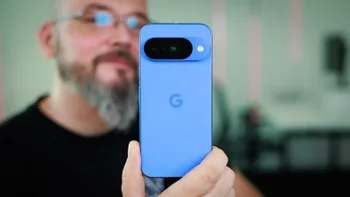
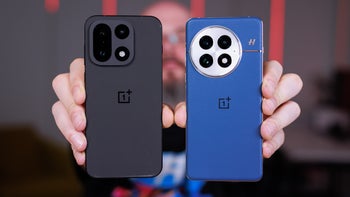
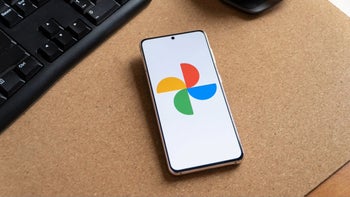
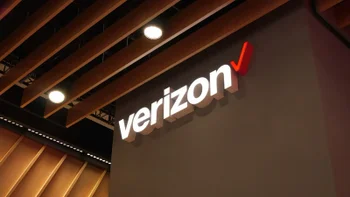


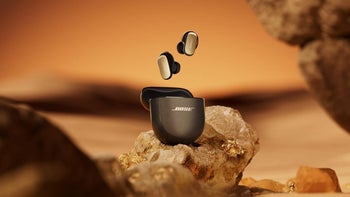
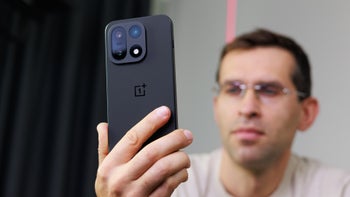
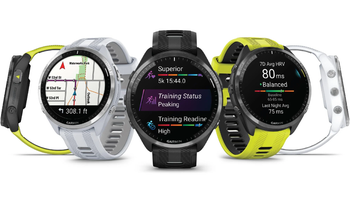
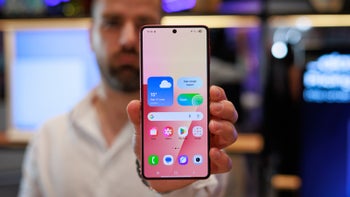

Things that are NOT allowed:
To help keep our community safe and free from spam, we apply temporary limits to newly created accounts: